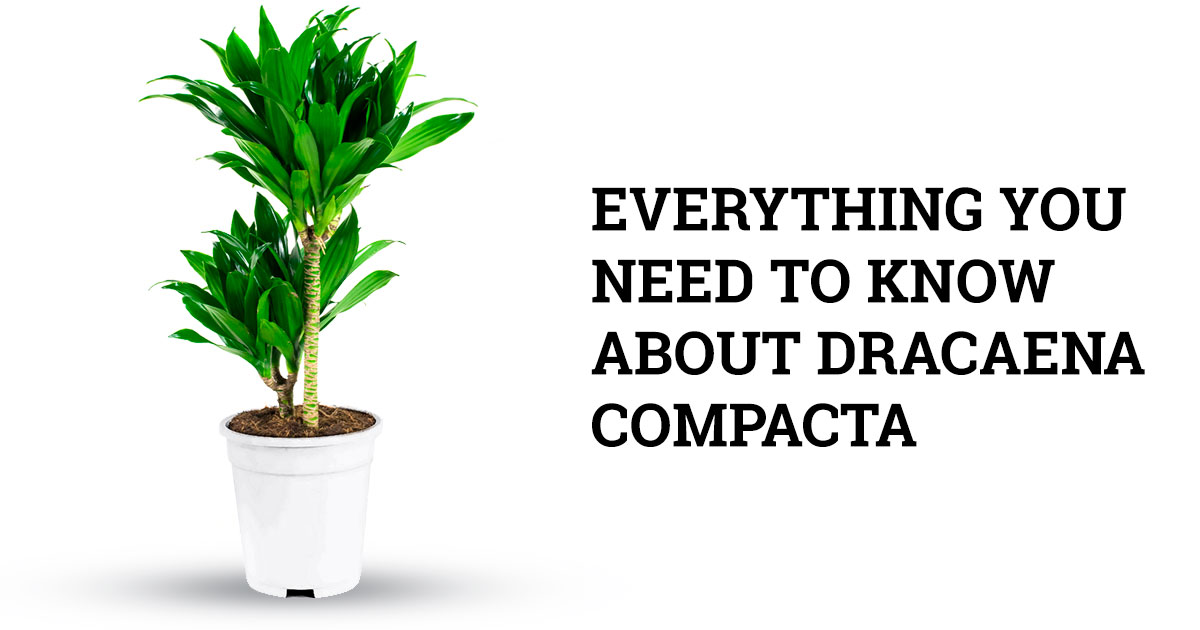When you know what to plant next to this or...
Dracaena Compacta Plant – Complete Care Guide
Most species of dracaena are by no means room-sized, which makes it difficult to keep them at home. However, there are also those that are able to fit on an ordinary windowsill. Dracaena Compacta is among them.
Dracaena Fragrans Compacta is one of the most popular representatives of the family of fragrant dracaena. In natural conditions, this evergreen shrub is able to reach 6-meter in height, while with indoor cultivation its growth usually does not exceed 2 meters.
✔ We Released The Dracaena HandBook
CLICK HERE TO LEARN MORE >>
Features and appearance
The middle name of Dracaena fragrans Compacta shrub indicates that it belongs to the species Dracaena fragrans. The birthplace of the plant is Central and South America, where it is called no other than the “tree of happiness”.
Under natural conditions, the dracaena reaches several meters in height and in diameter. The size of indoor plants is often much more modest, but it depends on both the variety and the care. Dracaena Compacta is popular due to its unpretentiousness, easy care and magnificent decorative look.
The height of the shrub is usually about half a meter, plants above 70 cm are extremely rare. Dracaena Compacta resembles a small palm tree with long narrow leaves. Beautiful dark green color and glossy structure attract attention immediately. And in bright sunlight, the stepped layers of leaves resemble a lush crown. The stem of Dracaena Compacta is slender but slightly shortened. The canopy is lush and voluminous.
Dracaena Compacta, unlike its close “relatives”, is resistant to temperature changes. For a short time, the plant can tolerate even 10 °C temperatures, whereas for other species 15 °C is already a critical limit.
Most gardeners believe that Dracaena fragrans Compacta is a shadowy plant, but in fact it is not. Deprive the plant of the sun and it will begin to decay. Moderate scattered sunlight contributes to good growth and development of plants. Therefore, it is so important in winter to move dracaena closer to the window so that it receives as much light energy as possible.
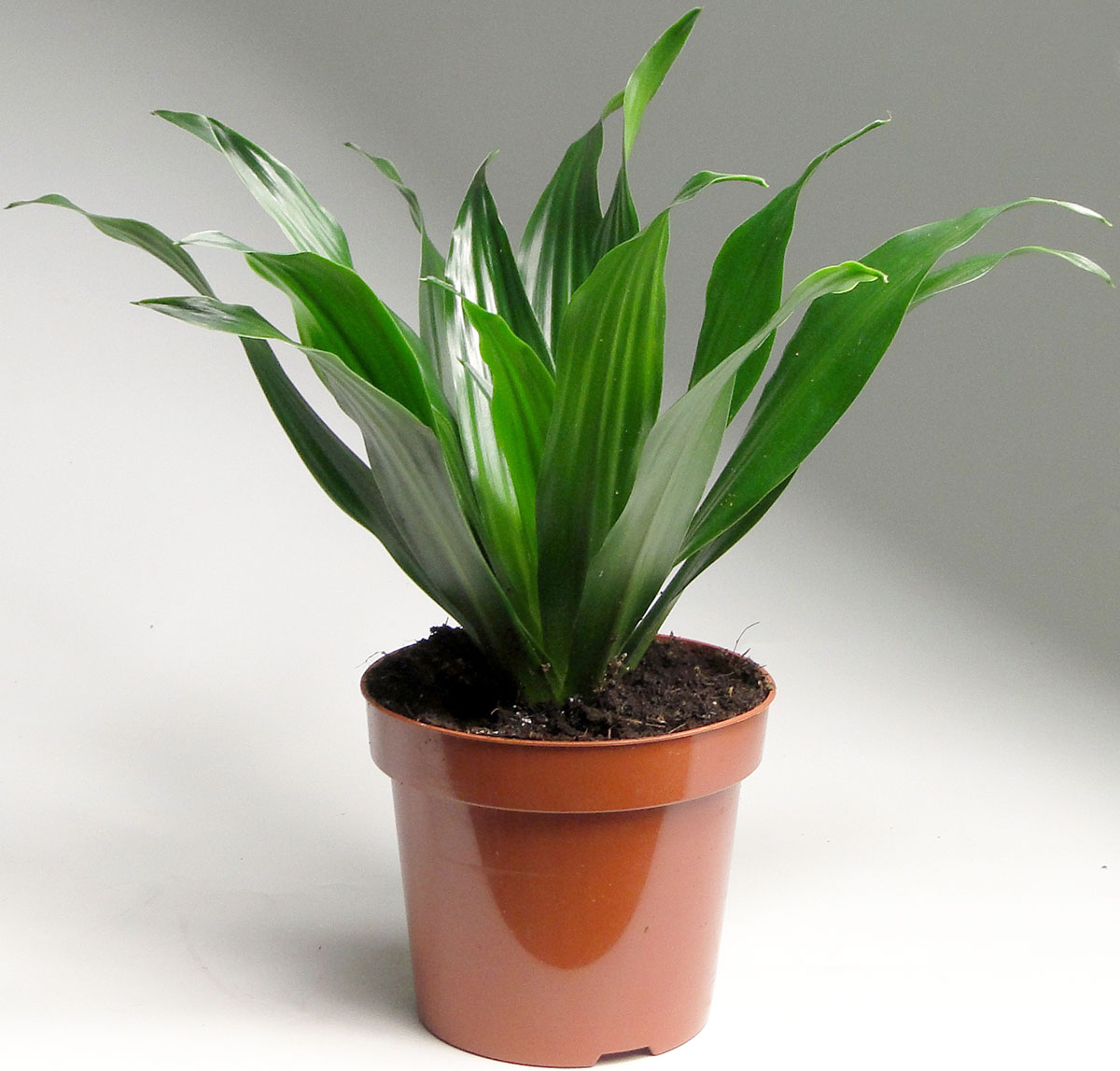
Dracaena Compacta: Plant Care Guide
Caring for Dracaena Compacta is characterized by standard activities suitable for any other types of dracaena.
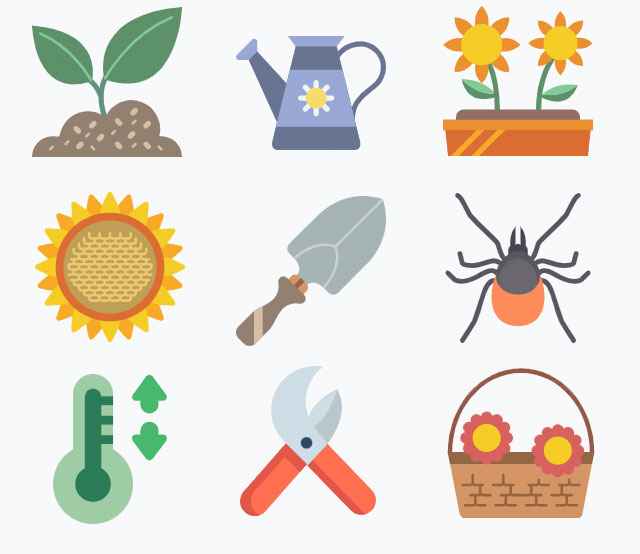
Lighting
Dracaena Compacta does not tolerate bright lighting. For such a plant, the ideal place is the corner far from the windows, where scattered light will fall on it. Dracaena of this kind prefers permanence, so changing location of the flower should happen as rarely as possible. In summer, it is desirable to take Dracaena Compacta to the loggia, protected from drafts and sharp gusts of wind.
Temperature
The birthplace of dracaena are hot countries, which explains the love of this tropical plant for high temperature and humidity. It is recommended to place Dracaena Compacta in the warmest room, where temperature indicators in winter do not fall below 18°C.
The plant growers should remember that a temperature below 12°C is ruinous for Dracaena Compacta. In summer, the plant easily tolerates a temperature rise of up to 30°C. However, high temperature in the room requires an artificial increase of humidity.
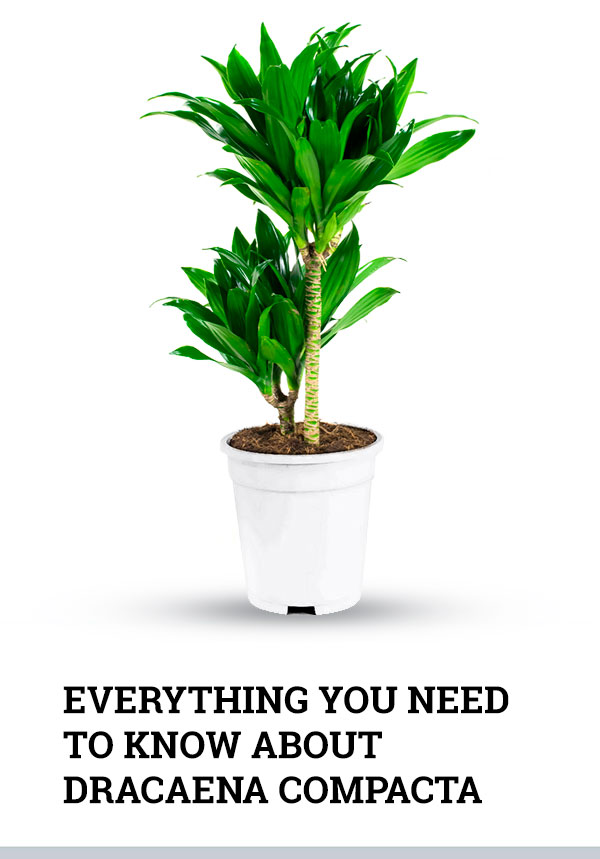
Watering
Dracaena Compacta watering should be frequent and quite abundant. Watering is carried out daily in summer. In winter, the frequency of watering should be reduced to twice a week. The flower grower should monitor the top layer of the soil and at the first signs of drying, irrigate the plant with filtered water at room temperature.
It is very important to regularly spray Dracaena Compacta leaves with water at room temperature. Dracaena Compacta is responsive to a summer shower, which allows you to refresh the plant and remove a cover of dust. You cannot leave after such a procedure a drop of water in the axils of the leaves, since this very often causes rotting of the plant. Particular attention should be paid to regular spraying of leaves from the underside.
Dracaena Compacta Replanting
Dracaena requires periodic replanting. Replanting of an adult plant is recommended not more than once in every three years. But young plants should be repotted more often. You should do repotting in springtime, when the plant awakens from the winter period of rest and is set to activate growth processes.
Remember that each subsequent replanting requires an increase in the size of the diameter of the plant pot by an average of 4 cm. It is important to give preference to a container of any natural material (clay, ceramics). Such a flower pot allows air to the root system of the plant well and does not allow moisture to stagnate.
It is better to acquire a ready-made soil for Dracaena Compacta. It is recommended to use a special planting soil for palm trees, enriched with a full complex of vitamins and minerals. However, you can also use a self-made substrate.
The planting substrate should consist of equal parts of deciduous soil, peat and sifted river sand with the addition of a small amount of charcoal. The latter component is very important for the plant and refers to preventive means against rotting of the root system of Dracaena Compacta.
The bottom of the pot should be covered with a layer of quality drainage, which will prevent stagnation of moisture inside the soil.
Poisonous
Remember that Dracaena Compacta is toxic to both cats and dogs. Do not allow your pets chew the leaves of the plant. It can cause weakness, vomiting and indigestion. At the first signs of poisoning, immediately bring your pet to a veterinarian. See more about pets and the effect toxins have here at the ASPCA.
Problems when growing and diseases of Dracaena Compacta

Incorrect care for Dracaena Compacta can lead to various diseases:
Dry leaf tips of Dracaena Compacta or stains on them may indicate insufficient watering, dry air indoors or sunlight on the plant. To prevent the dryness of leaves, you need to observe the irrigation regime, the humidity of the air and rearrange the plant in a place with scattered sunlight.
If the leaves of Dracaena Compacta are twisted and covered with yellow spots, this is a signal that the temperature in the room is too low or the plant is standing in the draft. To change the situation, you need to raise the temperature in the room or rearrange the pot with dracaena to a more suitable place.
Root rot can affect the plant as a result of improper watering, this disease manifests itself in the form of brown wet spots on leaves and trunk, over time the trunk becomes soft, and the plant dies. Root rot is not treatable, the only way out is to urgently replant your Dracaena Compacta.
Fungus Pythium is a dangerous disease from which it is impossible to cure Dracaena Compacta, you will have to get rid of it. Spores of the fungus enter the soil and affect the roots of the plant. It manifests itself in the form of yellowing of leaves and softening of roots. In order to prevent the appearance of fungus in Dracaena Compacta, it is recommended to add charcoal to the soil.
Fusarium is a common bacterial disease that occurs due to low temperatures and lack of light. This disease is characterized by blackening of leaves, preceded by red spots on the leaves. Treat the fusarium with fungicidal drugs.
As a result of improper care at home, Dracaena Compacta can be attacked by pests, the most common are:
Spider mite
Thrips
Parlatoria
All of them arise under favorable conditions:
Draught
Air dryness
Heat
Excessive watering
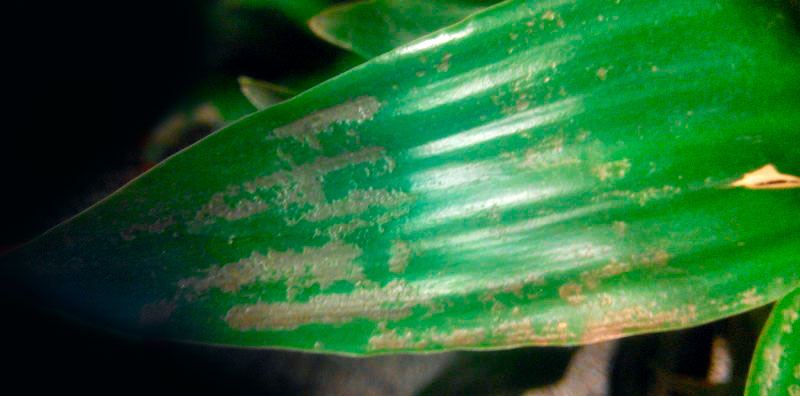
In order to get rid of pests on Dracaena Compacta, use a soap solution with the help of a cotton pad or sponge. Then spray the infected Dracaena Compacta with an insecticide preparation and place it in a plastic bag, which must be carefully tied and removed for 2-3 days. After such a procedure, it is better to replant your Dracaena Compacta.
For prevention purposes, it is recommended to periodically inspect the plant for various lesions by diseases or pests. To prevent diseases, it is recommended to follow the rules of proper care for Dracaena Compacta at home and timely feed the plant. Good conditions contribute to increasing the immunity of dracaena.
To the commonest of dracaena types belong:
- Snake Plant
- Marginata
- Sanderiana
- Reflexa
- Fragrans
- Lemon Lime
- Janet Craig
- Warneckii
- Massangeana
- Deremensis
- Draco (Dragon Tree)
- Lisa Cane
About the Author
My name is Michael Bauer, I have been growing and taking care of plants for 20 years. My dream has become a reality. I've had many difficulties along the way, but my love for our favorite plants has really helped me.So join us!







